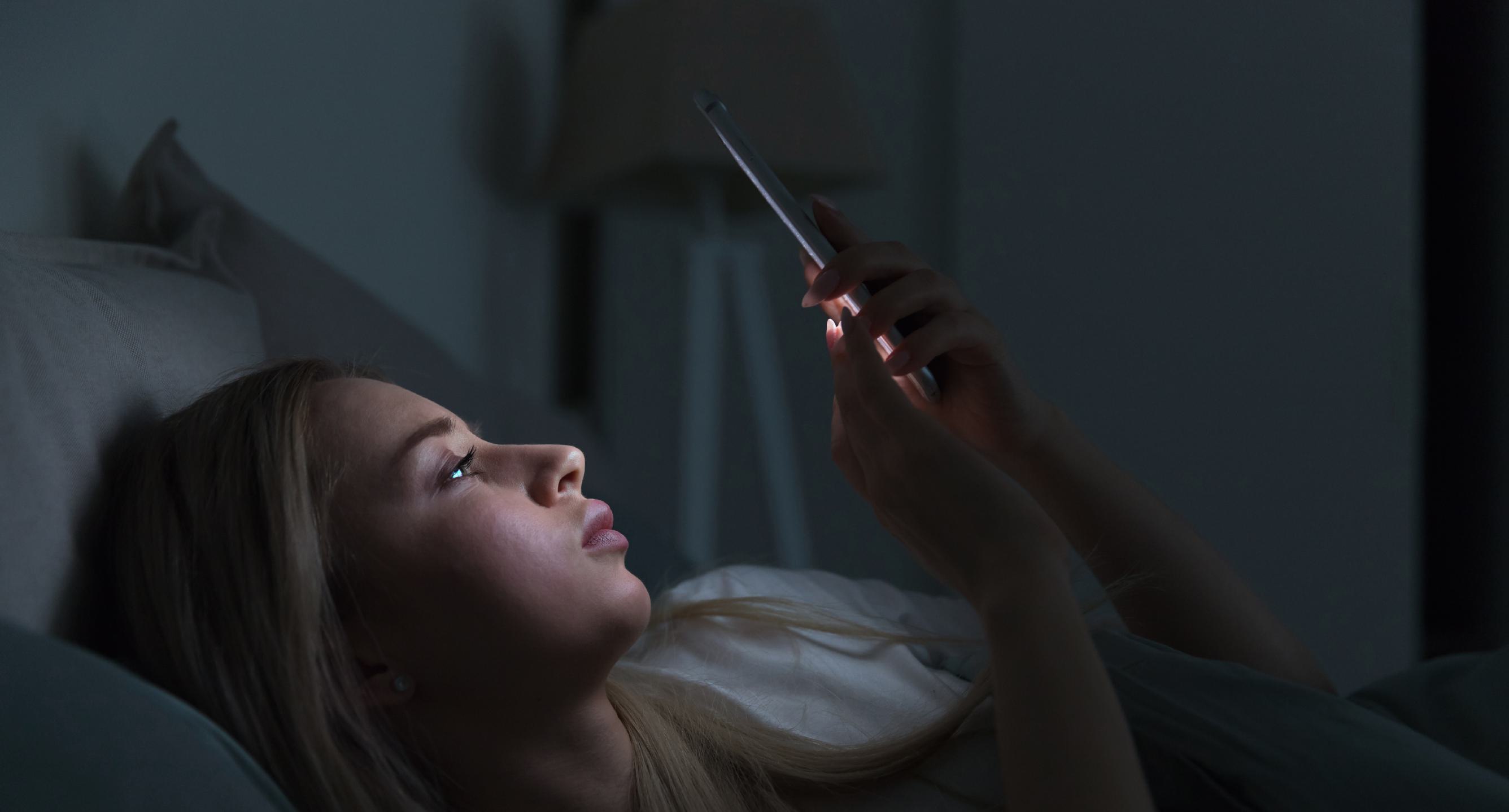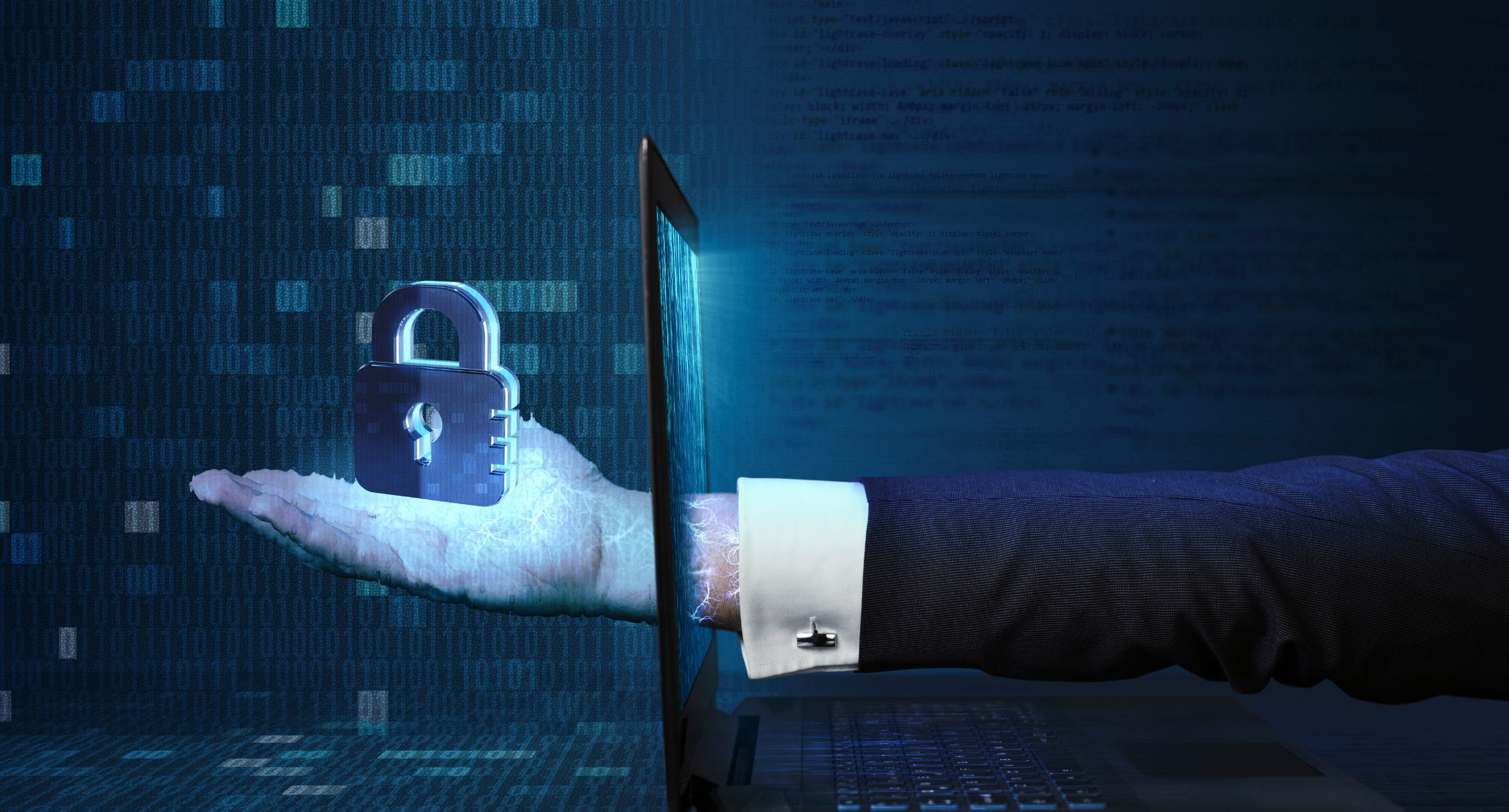انضم إلى الحركة - قم بالتوقيع على بيان التأخير 📑


5 طرق تضر بها المواد الإباحية بالأطفال والمراهقين
تتعرض صناعة الإباحية حاليًا لانتقادات شديدة. موقع الويب الرئيسي هو إيقاف التشغيل، تقوم الشركات التي تبلغ قيمتها مليارات الدولارات بإبعاد نفسها، و تستمر الدعاوى القضائية في التراكم. لذلك، ليس من الصعب إقناع الآباء بأن المواد الإباحية تؤثر سلبًا على المجتمع. ولكن كيف تضر المواد الإباحية بالأطفال والمراهقين؟
5 طرق تؤثر بها المواد الإباحية على الأطفال والمراهقين:
- تضر المواد الإباحية بدماغ الطفل الثمين. إنه في الواقع يغير المسارات العصبية.
- المواد الإباحية تضر بنظرة الطفل للجنس. إن الطريقة التي تظهر بها على الشاشة ليست كما هي في الحياة الواقعية.
- المواد الإباحية تضر بنظرة الطفل إلى الناس. تؤدي وحدات البكسل إلى الاعتراض. تقلل الإباحية من قدرتنا على رؤية شخص حقيقي غير قابل للتكرار.
- المواد الإباحية تضر بنوعية حياة الطفل. نظرًا لأن المواد الإباحية هي حافز طبيعي للغاية، لا يمكن للأطفال التوقف عن المشاهدة. يفقدون النوم والوقت.
- تتسبب المواد الإباحية في إيذاء الأطفال للأطفال الآخرين. عندما يرى الأطفال الصغار المواد الإباحية، فإنهم يمارسون المواد الإباحية على أطفال آخرين. دعونا نستكشف كل من هذه التأثيرات بمزيد من التفصيل.
تضر المواد الإباحية بدماغ طفلك الثمين.
الدماغ البشري مذهل. واحدة من أعظم مباهج الأبوة والأمومة هي مشاهدة الطفل وهو يكتشف الاكتشافات. سواء كان الأمر يتعلق بتعلم كيفية المشي أو قراءة الأبجدية أو العزف على آلة موسيقية، فإن المسارات العصبية تتطور باستمرار في أدمغتهم. نظرًا لأن الدماغ يتطور من الخلف إلى الأمام، فإن إحدى المناطق الأخيرة التي تتطور هي قشرة الفص الجبهي. هذه هي المنطقة المسؤولة عن:
- تركيز الانتباه
- توقع وتوقع عواقب أفعال الفرد
- التحكم في الانفعالات؛ إدارة عواطف المرء
- التخطيط للمستقبل
- التفكير الشرطي (لا يمكنني فعل A حتى يحدث B)
فكر في قشرة الفص الجبهي على أنها «مكابح» الدماغ. نظرًا لأن نظام الكبح الخاص بابنك أو ابنتك لا يتطور بشكل كامل حتى منتصف العشرينات من العمر، فمن المؤكد أنه سيصطدم بالأشياء من وقت لآخر. تشير التقديرات إلى أن 90٪ من الأطفال الذين تتراوح أعمارهم بين 8 و 16 عامًا شاهدوا المواد الإباحية على الإنترنت. يُترجم هذا إلى إصابة أكثر من 30.000.000 طفل (في الولايات المتحدة وحدها) بتشوهات الحاجز العصبي أثناء الاتصال بالإنترنت.
في حين أن التعرض العرضي هو أحد أكثر المواد الإباحية شيوعًا، إلا أن دماغ ابنك أو ابنتك شديد الحساسية لمكافأة المنبهات. يمكن أن تصبح سلوكيات المعنى معتادة بسرعة كبيرة. تصفها ديبورا هالبر بهذه الطريقة:
«تتواصل الخلايا العصبية في مناطق مختلفة من الدماغ التي تشكل نظام المكافأة باستخدام الدوبامين... إنه يعزز الذكريات المتعلقة بالمكافأة ويخلق ارتباطات عاطفية بالمكافآت... إنها ليست المكافأة نفسها، ولكن توقع المكافأة هو الذي يؤثر بقوة على ردود الفعل العاطفية والذكريات.»
على الرغم من كل تعقيداته، يعمل الدماغ وفقًا لمبدأ بسيط للغاية. كل ما تطعمه هو ما تتعلم أن تحبه. خاصة قبل سن 16. مع الإثارة المتسارعة (النوربينفرين) التي تأتي من المحتوى الجنسي (الأوكسيتوسين)، تخطف المواد الإباحية الدماغ وتركز انتباه الجسم حتى يبلغ ذروته (السيروتونين) ويخلق رغبة (الدوبامين) في تكرار العملية.
عندما تحدث هذه العملية خلال سنوات المراهقة البالغة الأهمية، يخلق الدماغ مسارات عصبية عميقة («الشقوق») تتوق إلى المواد الإباحية. ينتج عن ذلك دماغ بالغ يتوق إلى التحفيز غير الطبيعي للمواد الإباحية. ما عليك سوى قضاء 30 دقيقة في أي منتدى لاستعادة المواد الإباحية، مثل NoFap أو Reboot Nation (احذر القارئ - المحتوى الموجود في هذه المواقع حقيقي وخام وصريح - وهذا هو سبب عدم ربطي بها - إنه اختيارك للزيارة)، وستجد الآلاف من الشباب الذين أمضوا سنواتهم التكوينية بأكملها في مشاهدة المواد الإباحية. والآن هم مقتنعون بأن لديهم أدمغة، في غياب التدخل الإلهي، مرتبطة بشكل لا رجعة فيه بالتوق إلى الإباحية. من الصعب قراءة قصصهم.

تضر المواد الإباحية بنظرة طفلك للجنس.
«دقيقة واحدة فقط، من فضلك.» «انتظر لحظة.» «فقط انتظر» (تحدثت زوجتي للتو عن هذا الأخير لطفلنا البالغ من العمر 3 سنوات أثناء كتابة هذه الجملة!). نحن غير صبورين بطبيعتنا. سواء كان الأمر يتعلق بانتظار قدوم صديق، أو تحضير الكعك، أو أي شيء مهم يحتاج أطفالنا إلى قوله في منتصف حديثنا مع أي شخص تقريبًا؛ فأطفالنا يكافحون من أجل الانتظار.
تستغل المواد الإباحية عدم الرغبة في الانتظار، وتزيل الاستثمار في علاقة جنسية صحية، وتقلل من ممارسة الجنس إلى سلسلة من التجميعات التي ترضي بشكل أناني (ومؤقت) خيالًا متخصصًا. يمجد هذا النمط الجنس باعتباره الهدف قبل الأخير للعلاقات. في نهاية المطاف، إقناع المستخدم بأنه يمكن أن يتمتع بحياة جنسية مُرضية بغض النظر عن «الأمتعة» التي تأتي مع علاقة ملتزمة.
في الواقع، غالبًا ما يتقدم الذكور الذين يبلغون عن استخدام المواد الإباحية خلال فترة المراهقة يليها الاستهلاك اليومي للمواد الإباحية إلى مشاهدة المحتوى المتطرف، بما في ذلك العنف، للحفاظ على الإثارة (انظر المزيد حول هذا أدناه). بمرور الوقت، يصبح هؤلاء الرجال أقل اهتمامًا بالجماع الجسدي حيث يُنظر إليه على أنه لطيف وغير مثير للاهتمام. ثم يفقد الرجال القدرة على ممارسة الجنس مع شريك حقيقي. يتم تصنيف هذه الحالة على أنها ضعف الانتصاب الناجم عن الإباحية (PIED).
كما يقال غالبًا في مجتمعات التعافي من المواد الإباحية، «لا يمكن لأي امرأة حقيقية أن تقارن بعلامات تبويب متعددة من المواد الإباحية عالية الدقة المتدفقة». ويوافق الدماغ.
تضر المواد الإباحية بنظرة طفلك للآخرين.
لقد علمتنا الإنترنت، على الرغم من فائدته، أن نخفض قيمة الآخرين. لا تصدقني؟ ابدأ بقراءة قسم التعليقات بالمقالات حول موضوعك المفضل. من الرياضة والسياسة إلى الصحة والتمويل، يمكن للناس أن يقولوا بعض الأشياء الرهيبة عن بعضهم البعض. الشيء المجنون هو أن معظمهم لا يعرفون حتى الشخص الآخر.
المواد الإباحية هي بنفس الطريقة. سواء كنت تبلغ من العمر 4 أو 14 أو 40 عامًا، فإن مشاهدة المواد الإباحية تقود المستخدم إلى اعتراض الآخرين. المواد الإباحية هي معلم فظيع. إنه يعلم ابنك أو ابنتك ذلك:
- الجنس أناني
- الجنس عنيف
- الموافقة الجنسية ليست ضرورية
- الشركاء الجنسيون هم أشياء للمتعة
- الجنس متوقع

كل الناس لديهم قيمة، والمواد الإباحية تعلمنا خلاف ذلك.
المواد الإباحية تضر بنوعية حياة طفلك.
لقد كتبنا على نطاق واسع عن آثار وقت الشاشة على دماغ الطفل. نظرًا لأن معظم المواد الإباحية يتم عرضها على الشاشة، فإن علاقتها بإنتاجية الطفل يمكن أن تكون هي نفسها. تستغرق المواد الإباحية وقتًا بعيدًا عن الأنشطة الأخرى مثل النوم والواجبات المنزلية والوقت مع العائلة. دراسة عن آثار المواد الإباحية على الأولاد البالغين من العمر 14 عامًا أظهر أن زيادة استخدام المواد الإباحية على الإنترنت قللت من الأداء الأكاديمي للأولاد بعد ستة أشهر. هذا تأثير كبير.
وكما ذكرنا سابقًا، نظرًا لأن الدماغ الصغير يفتقر إلى قشرة الفص الجبهي الناضجة، فلا توجد مكابح لإيقاف السلوك. لذلك، عندما قال شاب لأمه، «أمي، لم أستطع التوقف عن النقر»، كان يخبرها بالحقيقة (العصبية).
قراءة مستمرة:»لماذا ينظر الأطفال إلى المواد الإباحية - غالبًا ما لا يكون ذلك خطأهم»
يُظهر الغوص العميق في العلاقة بين المواد الإباحية والإنتاجية الترابط مع القضايا الأخرى في هذه القائمة. كلما زاد عدد المواد الإباحية التي يشاهدها الطفل، السلوكيات الأكثر خطورة التي يميلون إلى المشاركة فيها. يمكن أن تسبب أنشطة مثل إرسال الرسائل الجنسية فقدانًا كبيرًا للنوم. سواء كان ذلك بسبب إرسال الرسائل الجنسية في الليل أو بسبب القلق المتزايد المرتبط بإرسال الرسائل الجنسية، يمكن أن يؤدي ذلك إلى انخفاض مستويات الإنتاجية.
سواء كنت تبلغ من العمر 4 أو 14 أو 40 عامًا، لا أحد يعيش أفضل حياته أثناء مشاهدة المواد الإباحية.
تتسبب المواد الإباحية في إيذاء الأطفال للأطفال الآخرين.
يتزايد السلوك الجنسي بين الأقران والاعتداء الجنسي بين الأطفال، ويرجع ذلك إلى حد كبير إلى توسيع نطاق الوصول إلى المواد الإباحية على الأجهزة الذكية في المنزل. الارتباط له علاقة بكل شيء الخلايا العصبية المرآتية.
الخلايا العصبية المرآتية هي نوع من خلايا الدماغ التي تستجيب بالتساوي عندما نقوم بعمل ما وعندما نشهد شخصًا آخر يقوم بنفس الإجراء.
عندما يتعرض الطفل لمحتوى إباحي، هناك احتمال قوي بأن يقلد ما شاهده مع الأصدقاء أو أفراد الأسرة (عادة الأشقاء الأصغر سنًا). هذه الأنواع من الإجراءات يتجاوز السلوك الاستكشافي العادي بين الأطفال:
الانفرادي
- السلوكيات التي تسبب الضيق العاطفي أو القلق أو الألم الجسدي
- الإيلاج المتكرر للمهبل أو الشرج بجسم أو رقم
- السلوكيات المستمرة، ويصبح الطفل غاضبًا إذا تشتت انتباهه
- السلوكيات المرتبطة باضطرابات السلوك أو العدوان
- يتم عرض مجموعة متنوعة من السلوكيات الجنسية بشكل متكرر أو يومي
إشراك أشخاص آخرين
- السلوكيات الجنسية التي تشمل الأطفال الذين تفصل أعمارهم بين أربع سنوات أو أكثر
- طفل يجبر الآخر على المشاركة
- تقليد صريح للجماع الجنسي
- الاتصال عن طريق الفم والأعضاء التناسلية
- مطالبة شخص بالغ بأداء فعل جنسي معين
5 طرق لمكافحة آثار المواد الإباحية
تطبيع الإباحية (مبكرًا). «اجعل الإباحية هي القاعدة».
إذا لم يلفتوا أعينهم إليك بعد، فأنت لا تتحدث عن ذلك بما فيه الكفاية! محادثات مستمرة ومتسقة. ما هو العمر المناسب للحديث الإباحي؟ نحن لا نعرفك أو طفلك، ولكن إذا انتظرت حتى تكون جاهزًا، فقد فات الأوان.
يرجى زيارة صفحة PYE Resources للكتب التي تقدم مساعدة إضافية في هذه المحادثات.
تعرف على جهاز التوجيه الخاص بك (واحتضنه).
جهاز التوجيه السيئ الخاص بك هو الجهاز الأكثر استخدامًا والأكثر تقديرًا في منزلك. لا أحد يهتم بها حتى لا تعمل. حان الوقت لمنحها بعض الحب. اطلع على نتائج اختبار جهاز التوجيه اللاسلكي.
تدرب على الهدوء.
لا تشعر بالوجل. لا تشعر بالوجل. لا تشعر بالوجل. لا تشعر بالوجل. بعبارة أخرى، لا تكن السبب في عدم عودتهم. استخدم عبارات مثل:
- «أنا فخور جدًا لأنك أتيت وأخبرتني. أراهن أن ذلك كان صعبًا».
- «لا يوجد شيء خاطئ معك.»
- «كيف شعرت، قبل وأثناء وبعد؟ دعونا نتحدث عن ذلك.»
- «اغفر لنفسك! يتعثر الجميع. اسقط 7 مرات واستيقظ 8. يمكننا القيام بذلك!»
- «سوف نتجاوز هذا. أعدك.»
- «لا يوجد شيء يمكنك القيام به من شأنه أن يغير حبي لك. لا شيء!»
سحق العار.
ذكّر ابنك أو ابنتك بأنه يمكنهم دائمًا الهبوط معك بهدوء وبشكل دائم ولا رجعة فيه. بدون حكم. احصل على المساعدة، إذا لزم الأمر.
5 علامات تشير إلى أنه قد يحتاج إلى مساعدة احترافية:
- سلوك طفلك مفرط.
- يبدو أن طفلك لا يستطيع التوقف عن مشاهدة المواد الإباحية، حتى بعد التدخل.
- تفضيلات طفلك في المواد الإباحية متشددة وغريبة و/أو غير قانونية.
- ينخرط طفلك في أنشطة جنسية مع غرباء قابلهم عبر الإنترنت.
- يقول طفلك إنه يريد رؤية مستشار.
«دعونا نربي الأطفال الذين لا يتعين عليهم التعافي من طفولتهم.» - بام ليو
ماذا لو كان لدي المزيد من الأسئلة؟ كيف يمكنني البقاء على اطلاع؟
إجراءان يمكنك اتخاذهما!
- اشترك في النشرة الإخبارية لاتجاهات التكنولوجيا، تنزيل PYE. كل 3 أسابيع تقريبًا، سنشارك الجديد، وما ينوي فريق PYE القيام به، ورسالة من كريس.
- اطرح أسئلتك في مجتمع الآباء الخاص بنا المسمى The Table! إنها ليست مجموعة فيسبوك أخرى. لا توجد إعلانات ولا خوارزميات ولا علامات نجمية. مجرد محادثات صادقة ونقدية وتعلم عميق! للآباء الذين يريدون «السير ببطء» معًا. كن عضوًا اليوم!

رسالة من الرئيس التنفيذي لدينا
اقرأ عن التزام فريقنا بتزويد الجميع على منصتنا العالمية بالتكنولوجيا التي يمكن أن تساعدهم على المضي قدمًا.
ظهرت في مرحلة الطفولة 2.0
يشرفني الانضمام إلى Bark وغيره من المدافعين الرائعين في هذا الفيلم.
مقدم المنتدى الاقتصادي العالمي
انضم إلى ائتلاف من الخبراء العالميين لتقديم معلومات عن أضرار وسائل التواصل الاجتماعي.
شهد أمام الكونغرس
شاركنا أبحاثنا وخبراتنا مع اللجنة القضائية بمجلس الشيوخ الأمريكي.

















